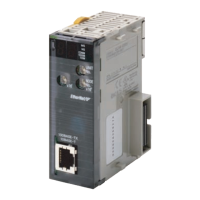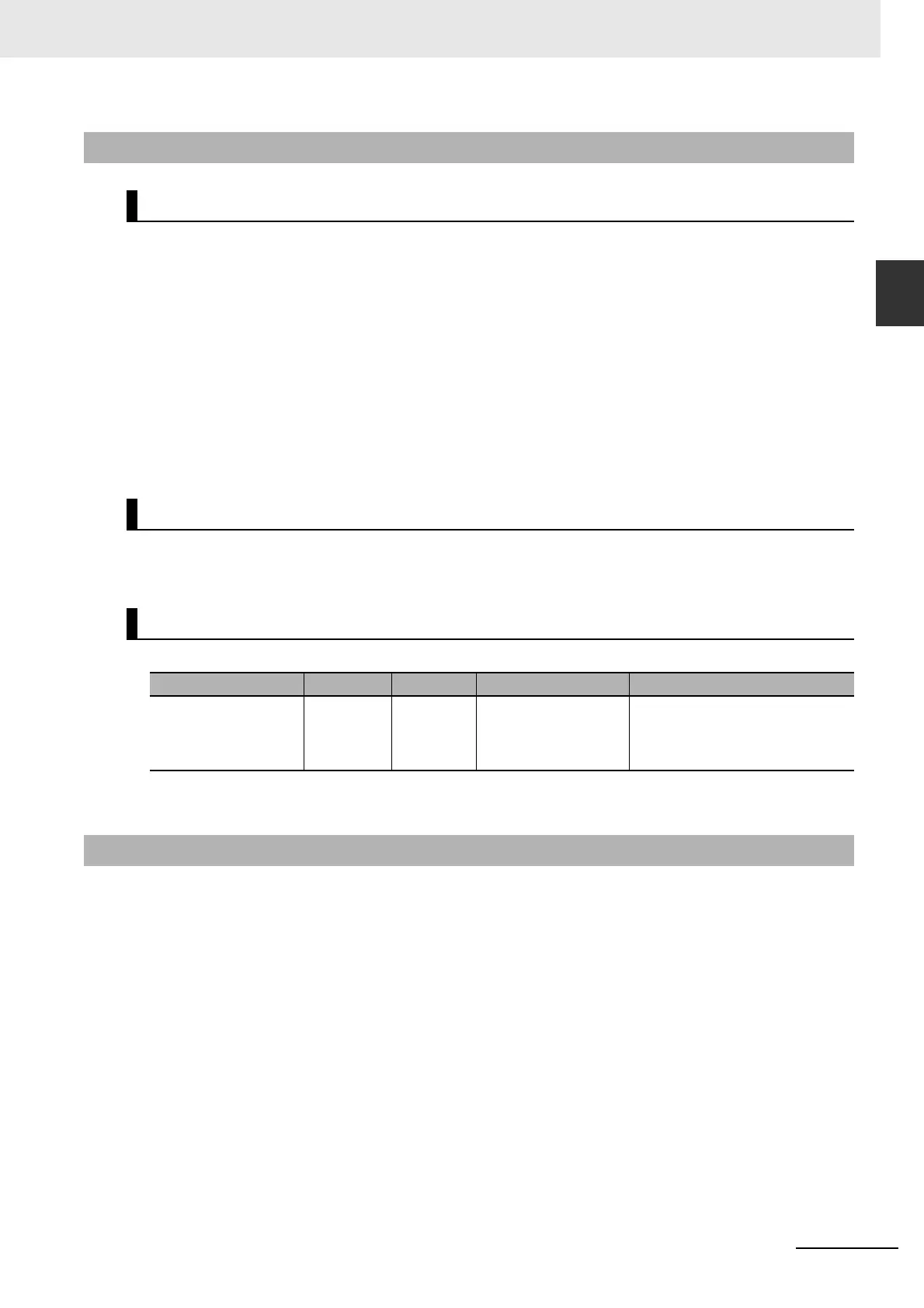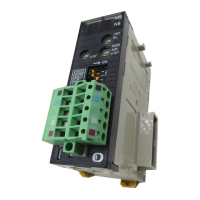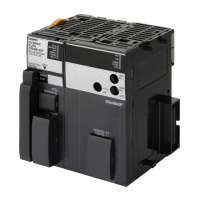9-15
9 FTP Server
CJ-series EtherNet/IP Units Operation Manual for NJ-series CPU Unit (W495)
9-7 Using SD Memory Card
Operations
9
9-7-2 File Types
Files are distinguished by assigning file names and extensions. The following characters can be used in
file names and extensions: File names are not case sensitive. (Lowercase characters are converted to
uppercase characters.)
A to Z, a to z, 0 to 9, and the following symbols: $ % ’ - _ @ ! ‘ ( ) ~ # & ^ [ ] { } ;
The following characters cannot be used in files names and extensions:
Blanks, multi-bytes characters, and the following symbols: / \ ? * ” : < > = + , . etc.
The maximum file name length is eight characters for the name and three characters for the extension.
The first period (.) in a file name is taken as the delimiter between the file name and extension. Exten-
sions are determined by the file type.
You can create up to five levels of directories to store files on the SD Memory Card (count the root
directory as one level). A maximum of 65 characters can be used in a directory name.
The files described in the following table can be read or written by the CPU Unit.
Refer to the NJ-series CPU Unit Software User’s Manual (Cat. No. W501) for details.
1
Insert the SD Memory Card into the CPU Unit.
2
Use the Sysmac Studio to initialize the SD Memory Card.
9-7-2 File Types
File Names
Directory
File Names Handled by CPU Unit
File type File names Extension Contents Description
Variables file (binary
format)
Refer to
9-7-2 File
Types.
.bin Specified variables This variables file contains the val-
ues of specified variables (which
include arrays and structures) in
binary format (.bin).
9-7-3 Initializing SD Memory Cards

